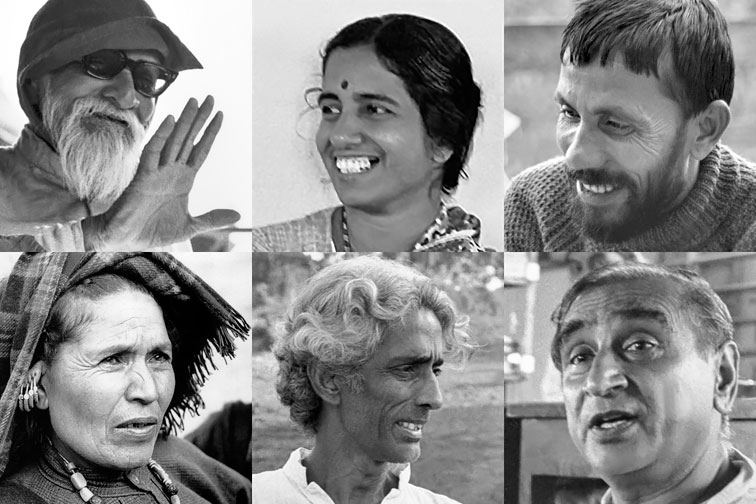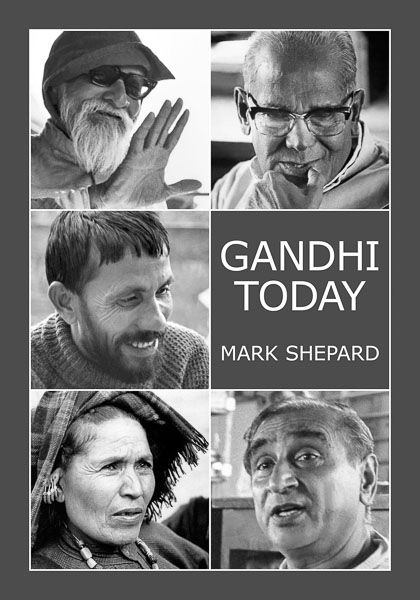“A masterpiece of committed reporting. . . . History that needs to be better known, told in clear, compelling, common language.”—American Library Association Booklist, Feb. 1, 1987 (starred review)
“Shepard has done a marvelous job describing individuals and groups keeping the spirit of Gandhi alive in India and throughout the world. His book presents living proof the ideals of the Mahatma will never die.”—Cesar Chavez, founder and President, United Farm Workers of America
“This lively book fills a critical gap in our understanding of Gandhi’s way. . . . A source of hope and inspiration.”—Joanna Macy, author/activist
“A remarkable job of introducing the contemporary Gandhian movement—readable, honest, challenging.”—Jim Forest, General Secretary, International Fellowship of Reconciliation
“A fascinating study. . . . As useful as it is encouraging.”—Michael Nagler, founder, Peace and Conflict Studies Program, University of California at Berkeley, and author, America Without Violence
“A fast-moving account of a living tradition. . . . Full of good ideas for peacemakers.”—Virginia Baron, Editor, Fellowship
“The author is a committed partisan of Gandhian thought and methods, but he is also a reporter who makes a case that Gandhi is an important figure who keeps on marching. . . . Among [the successful experiments he visited] are some remarkable ones.”—United Press International (UPI), Jan. 18, 1988
“Stunning, original. . . . An in‑depth look at the people who carry on the philosophies and teachings of the Mahatma.”—India West
“Highly recommended. . . . Will provide encouragement and inspiration to those working for a better world.”—Peace Magazine (Canada), Dec. 1987–Jan. 1988
“Finally there is a small, readable book on the Gandhian legacy. . . . Encouraging and positive.”—Thomas Weber, Legal Studies, La Trobe University (Australia)
“May prove to be the most important book of 1987.”—Green Letter, Spring 1987
“The seeds of civilization are sown in this short work.”—Northcoast View, Aug. 1987
“An excellent introduction. . . . Shepard uses a clear and popular style to convey his basic message: Gandhi’s legacy is alive in India and may inspire those who know about it.”—Fellowship, Sept. 1987
“Remarkable. . . . Everyone should have this book for its sheer inspiration. . . . Anyone interested in helping others or in helping make the world a better place should have this book.”—Henry O. Thompson, General Secretary, International Association of Gandhian Studies
“Delightfully uplifting and positive. . . . Presents strong, living examples of ideas and actions that work.”—Community Service Newsletter, July–Aug. 1987
“Probably the best book to bring oneself up to date on the historic change set in India by Gandhi. . . . Both reliable and inspiring.”—MANAS, May 27, 1987
“Hopeful idealism based in living experience.”—In Context, Summer 1987
“Mark Shepard has brought Gandhi out of the realms of myth and history. . . . Upbeat, enjoyable reading.”—Eco‑News, Apr. 1987
“Very fair and remarkably complete in his concise treatment. . . . I recommend this book highly.”—Michael Sonnleitner, Asst. Professor of Political Science, University of Northern Iowa
“Clear-headed, comprehensive. . . . I will have many uses for it.”—Mark Juergensmeyer, Coordinator of Religious Studies, University of California at Berkeley, and Professor of Ethics and Comparative Religion, Graduate Theological Union
“Important and heartening.”—Shalom (Jewish Peace Fellowship), Spring–Summer 1987
“A good reference book, a useful addition to undergraduate libraries, and a good supplemental text for a course that deals with Gandhi, contemporary South Asia, or self‑help movements.”—South Asia in Review, Jan. 1988
“Inspiring.”—Wilmington College Peace Resource Center Newsletter, Summer 1987
“A gem. . . . Buy two, one to put in a strategic place.”—Peace Brigades, Mar.–Apr. 1987
“Should be bought, read, and handed on by all who value Gandhi’s contribution. . . . An excellent gift book.”—Gandhi Foundation Newsletter (England), Autumn 1987
“A delight.”—Harmony
“Reminds us how far the ripples of Gandhi’s legacy have spread.”—Friends Journal, May 1988
“Sure to be the source of stimulating new ideas to those who are treading or want to tread the Gandhian way.”—Vigil (India), Sept. 1, 1988
“A useful introduction to the wide variety of people influenced by Mahatma Gandhi.”—Transnational Perspectives (Switzerland), Vol. 14, No. 3
“Clearly and compellingly written. . . . Should be read by everyone seeking a vision of a new movement and leadership in social life, and especially by high school students. . . . Inspiring.”—The Acorn: A Gandhian Review, Sept. 1988–Mar. 1989
“Highly readable. . . . More than conviction, Shepard brings perspective and understanding to an essential movement that remains alive today.”—Small Press
Adopted for classroom use at University of California at Los Angeles, Institute of Integral Studies (Berkeley), University of Hawaii at Manoa, American University (Washington, D.C.), University of Alabama at Birmingham, and McMaster University (Hamilton, Ontario).

